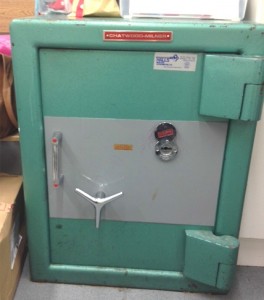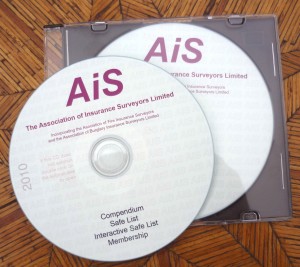Our expert safes consultant Mike Palmer, tells us more about this sometimes controversial issue.
Almost every risk assessor will have encountered this problem at some time or other. You ask the client if they have a safe – they say they have and take you to see it. It’s a name you recognise and you ask the insured to unlock it to reveal a model name or serial number on the back of the door. You can also see a base fixing bolt recessed into the floor of the safe, anchoring it in place. Now you have everything needed to identify the make and model and obtain a cash rating – the maximum recommended level of cash that should be retained in the safe overnight. But where do you go to get a rating and who actually decides what it should be?
THE LEVY LIST
Back in the 70s and 80s you would probably have turned to the Levy List. This was published annually by J W Levy Ltd, the country’s leading supplier of reconditioned safes. Levy’s Technical Director was responsible for gathering all available technical information on safes marketed in the UK, estimating their comparative resistance levels and recommending cash limits. In the 70s this was relatively easy. Although there were some much smaller manufacturers, three major companies dominated the market; Chubb, Chatwood Milner (soon to merge with Chubb) and the John Tann Group (including Stratford and Ratner). When I joined J W Levy in the late 70s as Marketing Consultant, my job was simply to get the list printed, lick the stamps and circulate it to everyone we thought would be interested.
Without testing, setting cash limits was never going to be an exact science but we tried desperately hard to remain objective. Unfortunately, J W Levy Ltd was also the commercial marketing wing of John Tann, so understandably there was a fair degree of scepticism, particularly if you were a manufacturer and felt your safes were not being treated favourably. This eventually came to a head when legal action was taken by one aggrieved manufacturer. Meanwhile, the Association of Burglary Insurance Surveyors (ABIS) had already declared that if they were to publish a list, theirs would more likely to be accepted as both independent and objective. Eventually Levy’s agreed to abandon their version and the ABIS Safe List duly took its place. Several Chief Surveyors were ABIS members and over the years they had acquired a substantial level of technical know-how. They were invited by manufacturers to inspect prototypes, witness in-house testing and then had to determine cash ratings for every model by all major manufacturers.
IN HOUSE LISTS
Many leading insurers had, however, produced their own in-house lists. The limits they were prepared to offer could vary widely and were often affected by commercial considerations. If one insurer was prepared to offer a higher level of indemnity than the others, it could give them an advantage when seeking new business. Because they didn’t want their rivals to know their limits, they were generally considered highly confidential. This obviously made life a little complicated for those of us trying to sell safes. The make and model we would recommend would be influenced by the customer’s insurer and their confidential in-house cash limits. We lavishly wined and dined senior insurance surveyors hopeful that they would let us take a peek at their lists. It was all very messy – and very fattening.
As time went by, the trend amongst insurers was to reduce overheads by creating ‘composite surveyors’. These ‘Jacks (and Jills)-of- all-trades’ surveyed everything; safes, intruder alarms, perimeter security, fire protection and health & safety. Eventually specialist security surveyors became an endangered species so when the Association of Burglary Insurance Surveyors agreed to merge with the Association of Fire Insurance Surveyors in 2005, they found it convenient to drop ‘Burglary’ from their name, becoming the less specific Association of Insurance Surveyors. Meanwhile, the industry had seen the introduction of European standards for testing and rating cash safes. Safes tested successfully in accordance with EN1143-1 were graded according to their level of resistance, from Grade 0 through to Grade VI. Each was given standard cash rating ranging from £6,000 through to £150,000. This was intended to make life a whole lot easier for Chief Surveyors who no longer had to spend time comparing one range of safes with another to determine their relative cash limits. On the downside, they now had to buy their own lunch.
EUROPEAN STANDARDS
This could have sounded the death knell of the AiS Safe List but the introduction of European standards opened the flood gates to foreign manufacturers. The number of makes and models marketed in the UK increased at a staggering rate and the AiS Safe Committee was constantly extending its listing of both currently manufactured safes, and the hundreds of out-of-production models available on the reconditioned market. This involved a tremendous amount of work and eventually the AiS List was digitalised and recorded on a compendium CD. The ensuing disk was circulated to all AiS members and updated annually.
Today the AiS List is no longer restricted to their members and is available to others outside the insurance industry, where it is recognised as an indispensable reference document for anyone who has a need to recommend a cash limit for a safe. The list was also extended to include other types of security containers plus vaults and strongrooms. To assist them with this Herculean project, the Safe Committee has, for the past few years, included specialist guest members from outside the insurance industry, each bringing a level of knowledge and expertise. Members of the committee meet frequently to update and amend the Safe List which has become more and more relevant and comprehensive as the years have passed. Following a spate of misleading and confusing claims by some manufacturers and importers, they introduced the AiS Approved Scheme. Manufacturers and importers are invited to submit their test certificates for scrutiny by the Safe Committee following which those with genuine certificates are colour coded and marked as ‘AiS Approved’ on the Safe List.
So, if you’re struggling to tell your Anglo from your Elba, don’t despair, the 2013 version of the AiS Safe List is now available. Further information on how to purchase your own copy is available by logging on to the AiS website at: www.insurancesurveyors.organd entering ‘Safe List Enquiry’ in the ‘Contact’ section.
Mike Palmer can be contacted at:
info@mikepalmerconsultancy.co.uk


